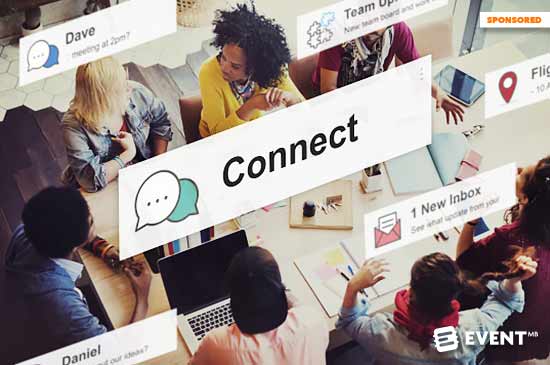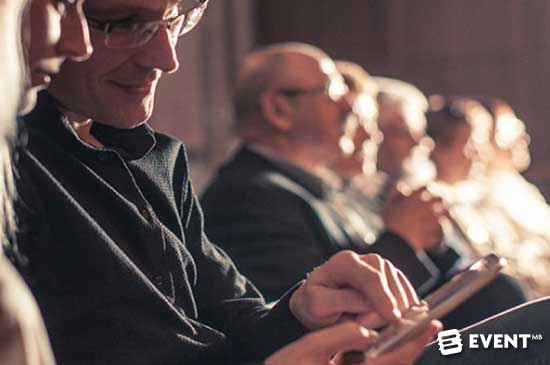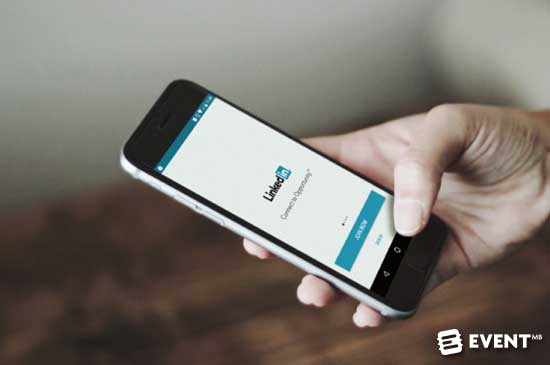Skift Take
Networking is important. No one denies this. So why deny your attendees the ability to connect beyond the superficial? Profile matching is a great place to start.
This is a sponsored post written by Grace Cheung, Marketing Assistant at QuickMobile. More information about Event Manager Blog’s sponsored posts.
When your attendees are gathered on the venue floor, name badges on and digital program in hand, what are they going to be talking about? Weather is a common place to start, but we need to forge deeper connections – from shared experiences, interests, or goals – if we are to maintain professional relationships beyond that initial meeting.
But it’s not just introverts who might find networking intimidating. Engaging meaningfully with strangers is a special sort of skill that takes time to develop. By providing the opportunity for attendees to find common ground before they meet face to face, you can make it easier for attendees to connect with each other.
When you use profile matching, you’re setting your attendees up to network faster, stronger, and for longer.
Profile Matchmaking Is Almost Like Online Dating
The fast-paced cadence of our modern, digital lives means that it’s often difficult to take the time to get to know someone – especially at a conference or work event, where networking is not the only objective to consider. Profile matching helps attendees cut through the clutter and make analog connections.
The first step of profile matching is asking attendees for information, often through questionnaires attached to their profile. You can customize these questions, and tailor them to fulfil the goals of the event. For example, information on your attendees’ hobbies might not be useful to know at a company user conference. But questions that ask what sort of learning attendees crave can go a long way towards helping them connect with others who have similar learning goals.
After this preliminary work is done, an algorithm calculates a “match” score between pairs of attendees, showing the percentage of similarity between them. The process is not dissimilar to online dating profiles that calculate romantic compatibility based on specific criteria. In this case, your questions will likely be geared towards professional development, interests, and career goals.
Relationships You Can Put on LinkedIn
If networking is a major goal for most attendees at a corporate event – and studies have shown us that this is true – then providing ways for attendees to maximize their ability to network will greatly improve satisfaction with your event.
Profile matching inspires multiple conversations between multiple people, resulting in connections that attendees might otherwise be hard pressed to initiate. It takes the guesswork out of networking, allowing attendees to quickly discover peers who will be most relevant to their professional development, interests, and career goals.
The intent is to help attendees make connections throughout the event that will span beyond the initial meeting. Instead of a single, isolated connection, profile matching allows you to broaden the scope and success of networking among your attendees. Identifying key relationships and opening avenues of conversation for attendees to pursue makes networking a more efficient and powerful tool.
Networking is not only about making a connection – the quality of those connections, and the mutual benefits that attendees gain from one another, are considerations as well.
Help Attendees Help Themselves
When matched attendees meet and connect with each other on a personal, meaningful level, they are in effect holding tailored mini-sessions of their own.
Profile matching allows them to take the reigns and adapt the event to their own interests and goals, without overtaking your objectives for the overall event. They are sharing their learning and experiences with common-minded peers, and receiving relevant knowledge in turn.
For you, this means keeping in mind the profile details that attendees will find the most meaningful and useful. This might be a focus on the geography, demographics, job description, or even personality type of attendees, helping them to meet their counterparts at other companies, or who face similar challenges in their professional endeavors.
The key is finding ways to group attendees so that they can share experiences with their peers, or with others who are interested in the same topics. Quality networking is the most effective when it includes an aspect of social learning as well, and letting attendees find ways to grow through their interactions with one another.
Focusing your attention, and therefore theirs, on pertinent aspects of the profile allows you to tailor the experience to the participants as a group – and then they can take it from there.
In Conclusion
Making events meaningful isn’t all on you.
Attendees need to be able to establish and accomplish personal goals in order to create meaningful experiences. Forging strong professional relationships with other attendees is a key part of that. By helping your attendees connect with one another – over shared career goals, work responsibilities, areas of professional development or other categories – you can take the guesswork out of networking. Attendees achieve more satisfying outcomes with less effort, creating value with each interaction.
Setting up your attendees to make strong connections helps ensure that those relationships last beyond the initial meeting. Profile matching creates positive, productive experiences, and ultimately allows you to create personal successes for each attendee at your event.









